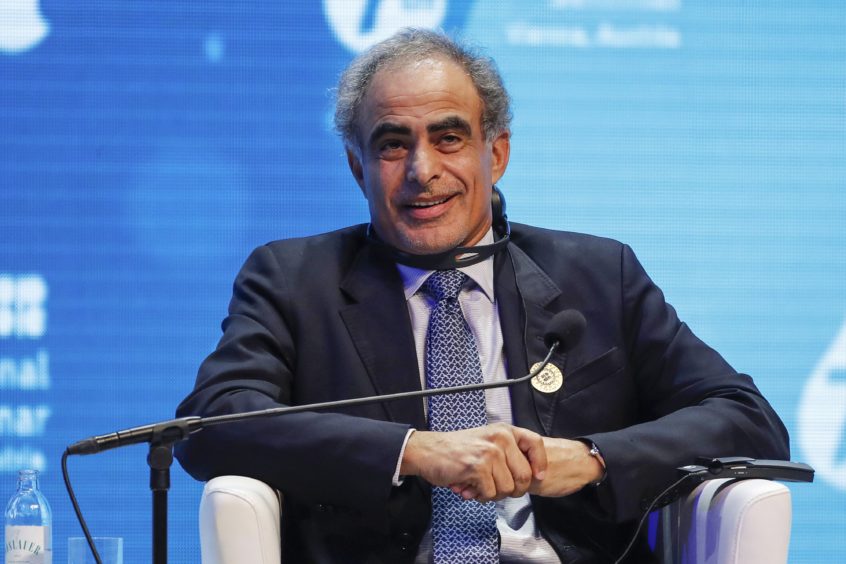
News last week that Russian firm Zarubezhneft was being considered for the development of an offshore oil concession in Oman brought into sharp focus the lack of update provided since the country’s 2019 bid round closed in May.
Without specifying the name of the asset Zarubezhneft was looking at, Oil Minister Mohammed al-Ruhmy told local media: “It’s an oil offshore [field], we want to hand over the block to them for further development … We [are] evaluating. We should make a decision very soon.”
He added that the Russian firm could take a 75% stake in the field, with state-owned Oman Oil Co. (OOC) to hold the remainder.
The minister said that the asset has significant potential but currently produces just 3,000-5,000 barrels per day, noting that the Russian company’s involvement would include additional exploration work in order to drive up output.
Energy Voice understands from a senior Omani industry source that the asset in question is block 8, which contains the West Bukha asset, currently Oman’s only source of offshore production.
The concession was relinquished by Norway’s DNO International and South Korea’s LG International in January, with 100% ownership being taken by OOC subsidiary Musandam Oil & Gas. The source said that the assets there amount to just 0.4mn barrels, while the last well, drilled in 2017, did not flow naturally. “The asset must be being re-evaluated because the upside is pretty minimal,” he said.
Bid round
Oman’s Oil Ministry went quiet following the closure of the six-block bid round which launched in February. Considering that Muscat had been vocal about previous successful rounds, the quiet suggests a lack of uptake.
In an effort to lower the perceived risk and attract wider interest in its 2016 auction, Oman published large quantities of data on the acreage, accrued by previous operators, in the latest case primarily state-backed Petroleum Development Oman (PDO).
But the latest bid round focused mainly on pure or near-pure exploration plays in the remote south-west. These had been part of PDO’s block 6 concession, which at 900,000 square km comprises the bulk of the sultanate’s onshore territory and produces around 650,000 bpd. The company was “obliged to relinquish these blocks due to statutory licence rules,” the ministry said.
Together these blocks offer potential across the complete producing section within Oman, from the Precambrian through the Cretaceous.”
As with earlier licensing rounds, Muscat has sought to convince potential investors that technological advances since previous exploration efforts will make the acreage more attractive.
The five south-western blocks are numbered 58, 73, 74, 75 and 76.
These have all been the focus of previous exploration efforts, though Oman said that block 73 was “essentially unexplored”, with the last of five wells drilled in 1985.
The outlier was the smaller block 70, which is located in central Oman and contains the undeveloped Mafraq heavy oil field, which the ministry described as “a secondary-recovery target”.
Five wells have been drilled, mostly before 1992 in the Shuaiba and Natih formations where gas was found. The most recent well was drilled in 2011.
The licence was said to be a proven oil block and a prospective gas condensate block. It lies just to the west of producing blocks three and four, which are operated by Lebanon’s CC Energy Development alongside Sweden’s Tethys Petroleum.
Lack of wildcat interest
Speaking to Energy Voice this week on condition of anonymity, a senior manager working for a large operator in Oman said: “The issue is that the areas offered in the licensing round have all been looked at for a long time, with very little prospectivity.”
He added: “Some of the heavy oil assets have turned out not to be economically viable. This lack of uptake corresponds with a general differentiation of strategy from E&Ps [exploration and production companies] globally to focus on near-field exploration and away from wildcat wells.”
There had been reason to be positive about the latest licensing round though, following deals for US major Occidental Petroleum (Oxy) and Italy’s Eni to sign up to new acreage in the months leading up to the new round.
In December 2018, Oxy signed exploration and production-sharing agreements (EPSAs) for blocks 51 and 65, completing the acquisition of contiguous acreage stretching across the north-west of the country.
Eni’s early 2019 Middle Eastern spending spree included signature of an EPSA for block 47, in the east of Oman, which had been offered in the 2017 auction. Eni and BP also signed a heads of agreement, intended to lead to an EPSA for the newly-delineated block 77. The asset is located in the north-west near the flagship $16bn Khazzan tight gas project and is thought to contain hundreds of bcm of gas.
Meanwhile, in 2018 Shell and Total agreed jointly to develop gas reserves in the Greater Barik of block 6. Following the launch of the 2019 bid round, they announced progress on this, signing an interim upstream agreement with the ministry, PDO and OOC. The project is intended to be integrated with gas-to-liquids and LNG bunkering schemes.
These stories of comparative success though have come about because of their being significantly derisked by the proven presence of resources or proximity to major known assets. Oman is an outlier in the Middle East because of its comparatively high extraction costs, owing to the complex nature of its geology. Despite the sultanate’s conducive investor environment, these challenges combined with the less-than-prime location of the assets on offer, appear to have made the 2019 bid round a risk too far.
Recommended for you
